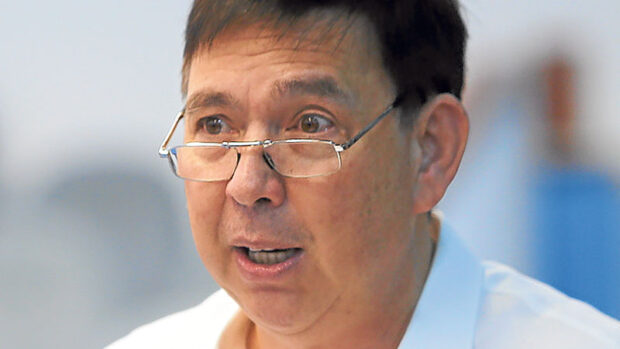Economic managers will come up with “more realistic” growth targets for 2024 until the end of President Marcos’ term in 2028 to reflect current economic conditions and after growth fell below the state’s expectations last year.
“We’re discussing that right now because I think we have to come out with a more realistic target,” Finance Secretary Ralph Recto told reporters in an interview at the Bureau of Internal Revenue’s anniversary event last Thursday.
“Something more realistic but still high for 2024 and beyond,” Recto said.
The inter-agency Development Budget Coordination Committee (DBCC) met last Feb. 5 to discuss the government’s growth outlook. That was Recto’s first DBCC meeting as finance chief.
Last December, the DBCC trimmed its gross domestic product (GDP) growth target for 2024 to 6.5 to 7.5 percent, from the previous projection of a 6.5 to 8-percent expansion.
At present, the biggest worry for the government is the prolonged El Niño dry spell, which is predicted to last until the second quarter of 2024 and may push up food and power costs.
Headwinds
Another challenge for the economy is the high interest rate environment that can hurt consumption and investments.
In 2023, the economy grew 5.6 percent, easing from the 7.6 percent expansion in 2022. The figure also missed the Marcos administration’s 6 to 7 percent growth target for last year.
Secretary Arsenio Balisacan of the National Economic and Development Authority said growth would have been stronger last year if not for the brutally high inflation and the aggressive interest rate hikes meant to tame fast-rising consumer prices.
But despite the headwinds, Balisacan said the current economic targets set by the DBCC were still doable.
No more rate hikes?
In the same interview last week, Recto said he does not expect future rate increases during the current hiking cycle as inflation had been within the Bangko Sentral ng Pilipinas’ (BSP) target range and was still softening.
“No, I don’t expect a future rate hike because inflation is going down. And it seems like it’s going down globally also,” said Recto, who will attend his first monetary policy meeting on Feb. 15 as the state’s representative in the powerful Monetary Board.
“It all depends on what the US Fed does as well … And then we look at our own data too,” he added.
Inflation, as measured by the Consumer Price Index (CPI), softened to an annualized rate of 2.8 percent in the first month of 2024, from 3.9 percent in December.
The latest reading, the lowest since October 2020, matched the lower-end of the BSP’s forecast range for last month.
It was also the second consecutive month that inflation eased to within the BSP’s 2 to 4 percent target after hovering above that range for 20 months.
But with threats to its inflation target still very much present, the BSP said it “deems it necessary to keep monetary policy settings sufficiently tight until a sustained downtrend in inflation becomes evident.” Governor Eli Remolona Jr. said a rate cut was “possible” this year.
The BSP’s benchmark rate—which banks typically use as a guide when charging interest rates on loans—is currently at 6.5 percent, the highest in 16 years. By keeping borrowing costs high, the central bank wants to bring demand for key consumer items in line with limited supply to prevent a fast rise in prices.
